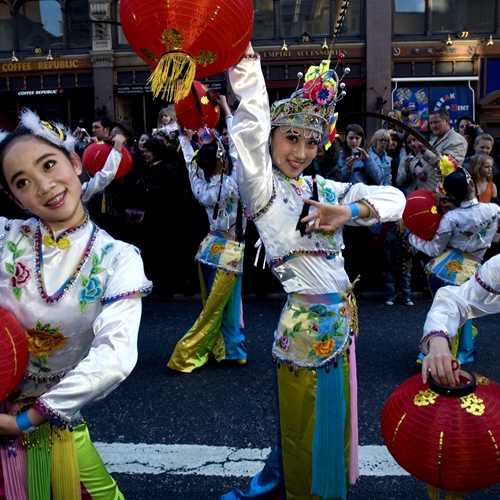
The Chinese New Year is 15 days of celebrating and eating traditional foods. Each ingredient is picked to symbolize good luck and happiness in the coming years.
Chinese New Year is full of traditions that are meant to bring good luck and fortune to celebrating families. From massive intricate dragon puppets to the giving of red envelopes full of money, there are many meanings behind these cultural happenings. It is important to learn about other cultures while attending Colorado culinary school to understand many flavors and traditional influences. Food is a major part of the holiday, as certain dishes are prepared only at this time and are made in good company to be eaten in celebration. Learn about some of these culinary traditions here:
The Tray of Togetherness
Similar to the Christian tradition of giving loved ones a plate of various holiday sweets, a Tray of Togetherness is packed with eight kinds of sugary snacks. According to Chow, this may include longans?, which are said to bring many sons, the seeds from red melons with the hope that they will bring happiness, coconut as a symbol of togetherness and preserved kumquats for prosperity. Families will create this assortment and gift it to their hosts, or leave it out for friends and relatives to eat.
Jai
In the Buddhist culture, people often eat meals packed with vegetables to cleanse themselves. This dish combines many good luck symbols, from lily buds meant to promote harmonious union to lotus seeds that may help with fertility and the birth of sons. When it comes to the noodles in this dish, the longer they are the better. They are said to represent a person’s life – short noodles may symbolize a shorter lifespan. This dish often includes bean curds, shiitake mushrooms, dried black moss, fried gluten balls, tofu, gingko nuts and more.
Fish
The Chinese word for fish sounds a lot like surplus. Chinese people believe that they should stock up to have an excess of food at the end of the year because this means they will have even more in the coming year. Many families enjoy fish several days of the 15-day New Year celebration. Common types of fish and their symbolic meanings include:
- Catfish for surplus
- Chinese mud carp for good fortune and gifts
- Crucian carp to bring good luck
According to China Highlights, eating two fish, one on New Year’s Eve and one on New Year’s Day, is supposed to bring the family surplus of everything they need for all the years ahead. When it comes to eating the fish, it is always devoured last, and its physical placement on the table has a great deal to do with Chinese symbolism. The head of the fish must be placed towards the more respected guests or elders at the table. Those individuals eat first, and only after they have tried it can other diners dig in. Another important rule is that the fish cannot move. Once it is set on the table, that is where it will stay until it has been eaten. It cannot be passed around between diners.
Chinese dumplings
To bring good luck and financial fortune to a family, the Chinese often make dumplings that are shaped like Chinese silver ingots. The wrappers are stuffed with diced shrimp, minced pork, fish, beef, ground chicken and vegetables. Often the dumplings are made in assembly-line fashion with five people working to make the dough, roll it, fill the wrappers, pinch them and cook them.
Some dumplings, called jiaozi or yuanbao?, are made mostly in northern China. These consist of pork and cabbage and are boiled and then served with vinegar and soy sauce. To add extra good luck, some families add peanuts to the dumplings.
The Chinese New Year celebrations last 15 days. These foods are eaten throughout the gatherings and are even brought to work as packed lunches after the fifth day, when many people must return to their jobs. Proper preparation and ingredients are necessary to reap the full benefits of good luck and fortune that each item represents.

